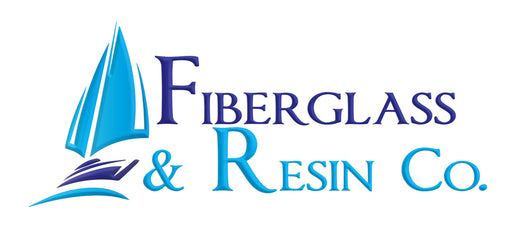When starting a new project, one of the first things you will want to do is look at what kind of fiberglass will be best for your application. Decide if you will need to build up thickness quickly or if strength is important to your project. Are there tight corners you are working with? This article will break things down a bit to help you decide what fiberglass fabric or fiberglass mat is right for your project. You can actually use both fiberglass fabric and mat together to achieve your desired outcome. Here is an overview –

(Fiberglass fabric- plain weave) Fiberglass Fabric is a woven fabric. There are several weave styles including plain, 4 harness satin and 8 harness satin. The 4, 6, 7.5 and 10 ounce plain weave fabrics are the most common. In the plain weave pattern, warp and fill yarns are interlaced over and under each other in alternating fashion. The plain weave is the simplest to handle because it does not unravel as easy as the other weaves when cut.

(Fiberglass fabric- four-harness weave) The four-harness satin weave pattern has a three by one pattern where a filling yarn floats over three warp yarns and under one. The eight-harness satin has one filling yarn that floats over seven warp yarns and under one. The satin weaves are a little stronger and more pliable than the plain weave and conform easier to curved surfaces. They are harder to handle than the plain weave, though. (We only carry the plain weave fabrics at our East coast facility) If you are looking to create a strong, light weight product, you will want to use fiberglass fabric. Fiberglass Mat (also known as chopped strand mat) has short strands of fibers that are held together with a resin binder. The fibers are randomly oriented. It is important that you know that fiberglass mat is only compatible with polyester and vinyl ester resin. Ours is not compatible with epoxy resin. When the resin is added to the mat, the binder dissolves and the fibers can be moved around. Mat conforms to tight curves and corners easier than the weaved fabric.

Fiberglass mat is not compatible with epoxy resin because the resin binder holding the fibers together needs styrene to properly dissolve. Polyester and vinyl ester resins have styrene in them. There are some places that sell fiberglass mat that is compatible with epoxy but it is hard to come by and much more expensive. Fiberglass mat is the least expensive fiberglass and is often used in mold construction or projects where thickness is necessary. Mat is often used to prevent print through. Print through is when the texture of the fabric weave shows through the resin. This can be avoided by adding mat as the first layer, before the gel coat, in a laminate. Mat is not very strong. If your project needs strength, you should choose a woven fabric or you could combine mat and fabric together. The fiberglass mat can be used between layers of woven fabric to help build thickness quickly and aid in all the layers bonding well together.

Visit our product page at www.fiberglassandresin.com to see what products we carry. If you don't see what you need, send us an email or give us a call. We carry additional fabric, mat and resins at our west coast facilities but there will be additional shipping costs.
